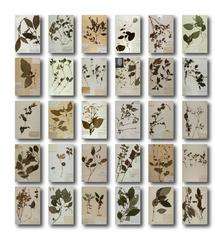35,000 new species 'sitting in cupboards'

(PhysOrg.com) -- Of 70,000 species of flowering plants yet to be described by scientists, more than half may already have been collected but are lying unknown and unrecognised in collections around the world, Oxford University research suggests.
A lack of resources for collections of plant specimens – known as ‘herbaria’ – and a lack of experts who can identify new species are leaving a vital reservoir of information about global biodiversity untapped, the study’s authors believe. Their work shows that it currently takes on average 30-40 years from the time a flowering plant specimen is collected to it being recognised and described as a new species.
A report of the research appears this week in PNAS.
‘Many people think that discovering new species is primarily about expeditions to exotic locations and collecting new specimens, but the truth is that thousands of new plant species are lying unidentified in cupboards, drawers and cabinets around the world,’ said Dr Robert Scotland of Oxford University’s Department of Plant Sciences, an author of the report.
At the moment our knowledge of flowering plants is greater than our knowledge of almost any other group of organisms of comparable size – it is estimated that we know about 4 out of 5 species compared to knowing about only 1 in 10 species of insect, for example. Because flowering plants are found in every terrestrial habitat and every area of the globe they are a vital tool for monitoring biodiversity.
‘Because people have been collecting plants from around the world since before Victorian times the job of identifying a new plant species is becoming harder every year as collections fill up and it becomes more difficult to spot the new species,’ said Dr Scotland. ‘A lot of work needs to be done comparing specimens from different parts of the world, and eliminating any duplicates, before we can be sure that a plant is unique and describe it. At the moment there simply aren’t enough experts to do this.’
Herbaria consist of collections of dried plant specimens mounted on card and then filed away in cupboards and cabinets. Oxford University’s Department of Plant Sciences has its own herbaria containing around one million specimens and for the study worked with colleagues from the Natural History Museum (London), Royal Botanic Gardens Kew, Royal Botanic Garden Edinburgh, Missouri Botanical Garden, and the Earthwatch Institute.
‘Our own research into one particular genus of flowering plants, Strobilanthes, described 60 new species from specimens which had been sitting unexamined in herbaria for a long time,’ said Dr Scotland. ‘We now know that this pattern of new species going unrecognised is repeated at the world’s greatest plant collections, hindering efforts to monitor global biodiversity and measure the impact of human activity on plants and animals.’
Provided by Oxford University



















